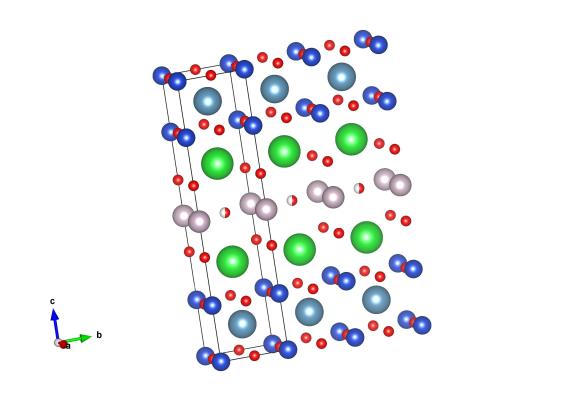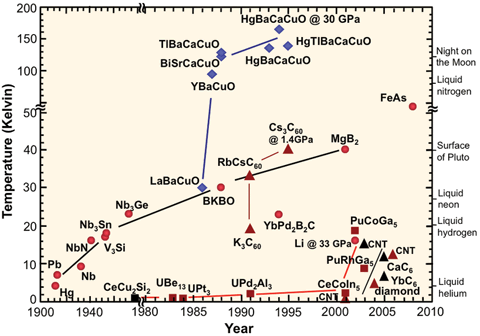How high is high for a high-temperature superconductor? – HgBaCaCuO
What does it look like?

Image generated by the VESTA (Visualisation for Electronic and STructual analysis) software http://jp-minerals.org/vesta/en/
Lots of elements in this structure. The blue atoms are copper, with the red atoms representing oxygen (so the structure has copper oxide layers like LBCO. But additionally this materials had Murcury (pink), Barium (green) and Caclium (light blue) atoms.
What is it?
Continuing on from the discovery of high temperature superconductors in 1986, a plethora of research was carried out on different varieties of Cu-O materials in the race to discover an even higher Tc superconductor. A large breakthrough came with the discovery of YBaCuO in the late 1980s. This is an iso-structural material to LBCO, which has a much larger transition temperature, Tc = 92K. However the effort required to keep this material in its superconducting state (e.g. with liquid nitrogen) is still too costly to make this material practical in everyday use.

Progress in development of superconducting materials – Source Department of Energy http://www.ccas-web.org/superconductivity/#image1
Not long afterwards, in the early 1990s, the highest temperature superconductor to date was found. This material still contains layers of copper and oxygen, but this time coupled with mercury, barium and calcium. It has a Tc = 133K, and research has shown that applying pressure can increase the superconducting transition temperature even more!
Where did the structure come from?
This particular structure was taken from the work titled "Neutron powder diffraction study at room temperature and at 10 K of the crystal structure of the 133 K superconductor Hg Ba2 Ca2 Cu3 O8+d" published in Physica C, Superconductivity in 1997 by Chmaissem et al.






